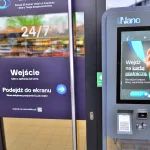Central Asia’s private equity (PE) market has reached an inflection point. By 2025, a cumulative of circa 3.2 billion US dollars in PE capital was deployed across Kazakhstan, Uzbekistan, and Kyrgyzstan. The region is shifting from a ‘frontier’ market to a full-fledged destination for institutional investment—for global capital, that matters.
The transformation has unfolded in stages. In 2020–22, Covid-19 accelerated digitalisation and e-commerce. Following Russia’s 2022 invasion of Ukraine, an inflow of capital and talent from Russia bolstered technology and real estate. Governments also announced the first large-scale privatisation programs.
In 2023–24, the region received record funding from development finance institutions (DFIs), with the European Bank for Reconstruction and Development (EBRD) investing 2.26 billion euros, and the International Finance Corporation (IFC) allocating 1.04 billion US dollars. High-profile IPOs—including Kazakhstan’s national airline Air Astana, which raised roughly 350–370 million US dollars—have strengthened confidence in exit liquidity.
As of today, the 3.2 billion US dollars in PE capital is actively deployed in the three core markets—Kazakhstan, Uzbekistan, and Kyrgyzstan. An additional 1.7 billion US dollars remains in uncalled commitments—approved and reserved by investors but not yet drawn as projects move through rollout.
The private equity landscape
In my role, I’ve monitored the region’s private equity market for many years. The market is difficult to navigate and not highly transparent, yet the evidence suggests it is at—or near—its peak.
The largest share of PE assets is in Kazakhstan—the region’s engine of private-equity activity. Through 17 funds run by Qazaqstan Investment Corporation (QIC), 2.8 billion US dollars has been deployed across 277 active portfolio companies spanning agriculture, industrials, IT, and healthcare. In Kazakhstan, each dollar of local investment attracts about 2.1 US dollars of foreign capital. Key international limited partners include Mubadala Capital, Gulf Capital, and CITIC Group.
In Uzbekistan, excluding the National Investment Fund, about 350 million US dollars in PE capital has been deployed. The National Investment Fund, managed by Franklin Templeton, totals 1.5–1.7 billion US dollars and is in the process of receiving assets. The state-backed Uzbek Direct Investment Fund (UzDIF) adds $100 million for co-investments.
We also observe growing activity in Kyrgyzstan. The country has received roughly 50 million US dollars of actively deployed PE capital. Since 2016, the Russia—Kyrgyz Development Fund has operated with 500 million US dollars in authorised capital, though less than 15 per cent has been utilised to date. In June 2024, a National Investment Fund was established to consolidate state assets. Significant volumes of re-export trade create indirect opportunities in transport, warehousing, logistics, customs services, and insurance; transit-related revenues account for about 23 per cent of GDP.
A new geography of investment
In my view, one of the most notable shifts is the rise of non-Western capital, particularly from the Gulf states. Public data indicate that, in 2024, roughly 35 per cent of new investment in Central Asia originated from the Middle East—more than twice the share from Western sources (around 15 per cent).
Gulf sovereign funds—Mubadala, ADIA, QIA, and PIF—are investing actively in infrastructure, the energy transition, and logistics. Masdar is executing approximately four billion US dollars worth of renewables projects in Uzbekistan. ACWA Power (Saudi Arabia) has announced more than 13.5 US dollars billion for projects in Uzbekistan and Kazakhstan.
China is also recalibrating its Belt and Road strategy, shifting from purely cross-border trade and transport infrastructure toward green energy and financial-system integration. A standout example is CITIC’s co-investments alongside QIC in private-equity activity (CITIC Group is among the international managers and investment partners that QIC works with to manage its portfolio of funds and invest in promising projects in Kazakhstan).
At the same time, intra-regional players are strengthening and becoming more institutional, such as Verny Capital in Kazakhstan and Orient Group in Uzbekistan. They are ready to co-invest with institutional funds in regional projects, expanding Central Asia’s PE ecosystem.
Where the money is going
Historically, investment activity in the region has been concentrated in five key sectors. The largest is energy transition and infrastructure (around 45 per cent), including projects in green hydrogen, solar, and wind dominate deal flow.
Then there’s financial services and fintech (around 15 per cent), with teams building digital finance—mobile banks, marketplaces, and online lending—often drawing on the Kaspi.kz model, Kazakhstan’s leading fintech.
Investment in transport and logistics meanwhile (around 12 per cent) is underpinned by the growth of the Middle Corridor, a critical Europe–Asia route through Central Asia.
Next is digital infrastructure and technology, which accounts for around five–ten per cent of investment, covering internet networks, data centres, and software development, supported by state tax incentives and IT parks.
Finally, consumer and healthcare (around 10 per cent), fuelled by urban migration among young people which is lifting demand for consumer goods and quality medical services.
Illustrative recent transactions include Qatar’s Power International acquiring Kazakhstan’s Mobile Telecom for 1.1 billion US dollars; Lesha Bank (Qatar) purchasing a controlling stake in Bereke Bank for 135 million US dollars; and Air Astana’s IPO, which raised approximately 370 million US dollars.
Risks, and how to manage them
As in any emerging market, opportunity goes hand in hand with risk. In Central Asia, investment risks cluster around political variability, currency volatility, and gaps in ESG adoption and enforcement at the company and market levels.
Kazakhstan can be viewed as moderate-risk: broadly stable, with relatively effective and predictable courts and regulators. A lingering concern is latent resource nationalism—the possibility of heightened state control over oil, gas, and metals.
Uzbekistan is pursuing rapid economic and political reforms and is opening up to investment; however, there is execution risk (announced changes may stall) and potential policy reversals in the event of leadership shifts.
Kyrgyzstan remains high-risk while institutions are weak and the political environment is volatile. For example, in 2021, the authorities imposed external administration on the Kumtor gold mine, triggering a dispute with owner Centerra Gold Inc.
Currency risk is significant: over the past five years, local currencies have depreciated by 30–45 per cent against the US dollar. Foreign exchange (FX) hedging can cost 8–18 per cent per annum. On the Astana International Exchange (AIX), non-deliverable forward (NDF) pairs are now available, enabling synthetic hedges without exchanging physical currency – an instrument that could, over time, help shareholders protect investments from FX swings.
What works as a strategy? Examples include co-investing with DFIs; using the legal and financial structures of the Astana International Financial Centre (AIFC); establishing companies and funds under Dutch jurisdiction; and insuring political risks via the Multilateral Investment Guarantee Agency (MIGA), which covers expropriation, war, and capital-transfer restrictions. These steps won’t reduce risk to zero, but they materially improve investor protection and confidence.
The talent deficit: An underestimated barrier
One of the most underestimated barriers to successful investing in Central Asia is a shortage of senior leadership talent. A lack of top-tier executives capable of making strategic decisions slows growth and erodes competitiveness. Our research indicates the most acute shortages are in ESG (about a 50 per cent shortfall), IT leadership/CIO roles (about 40 per cent), and CFO positions (about 30 per cent).
Several factors drive this: a young talent pool with limited experience; strong competition from state-owned enterprises (which often attract the best specialists); and weak succession planning, meaning knowledge and leadership are not smoothly passed along.
Potential solutions include encouraging the return of diaspora professionals, easing mobility and work across the Eurasian Economic Union (EAEU), and bringing in international executives on fixed-term contracts with mandated knowledge transfer. In Kazakhstan, senior managers with international experience now earn 250,000–400,000 US dollars per year, on par with Eastern Europe.
Four recommendations for investors entering Central Asia
Drawing on the observations of my colleagues at EA Group and analysis of major transactions, four tactical approaches stand out for global funds looking to enter Central Asia’s PE market.
Firstly, start by partnering with DFIs: co-investments lower risk, provide access to vetted companies, and enhance regulatory comfort. Secondly, focus on sectors with durable growth: infrastructure, fintech, and the energy transition offer the best balance of returns and exit options.
Thirdly, integrate ESG from day one: companies with ESG plans and reporting can command up to a 15 per cent premium at exit. And, finally, pre-plan your exits: consider dual listings on AIX and the London Stock Exchange, strategic sales, or secondary fund exits—provided these paths are built in from the start.
In 2025, dual listings on regional (AIX) and international exchanges are likely to become standard practice; the first unicorns outside Kazakhstan may emerge; and secondary markets could take three-five years to reach full institutional maturity.
The growing multipolarity of capital—with investment arriving from a wider set of countries and sources—together with evolving regulation, improving business norms, overall population growth, and a rising cohort of young, economically active citizens, makes Central Asia an increasingly attractive partner for PE investment.
Returns in Central Asia are already comparable to—and at times higher than—those in more mature regions such as Southeast Asia and Eastern Europe. The opportunity set for PE investors is only beginning to unfold. For those ready to act now, this could be the most favourable entry point in a decade.
Photo: Dreamstime.







